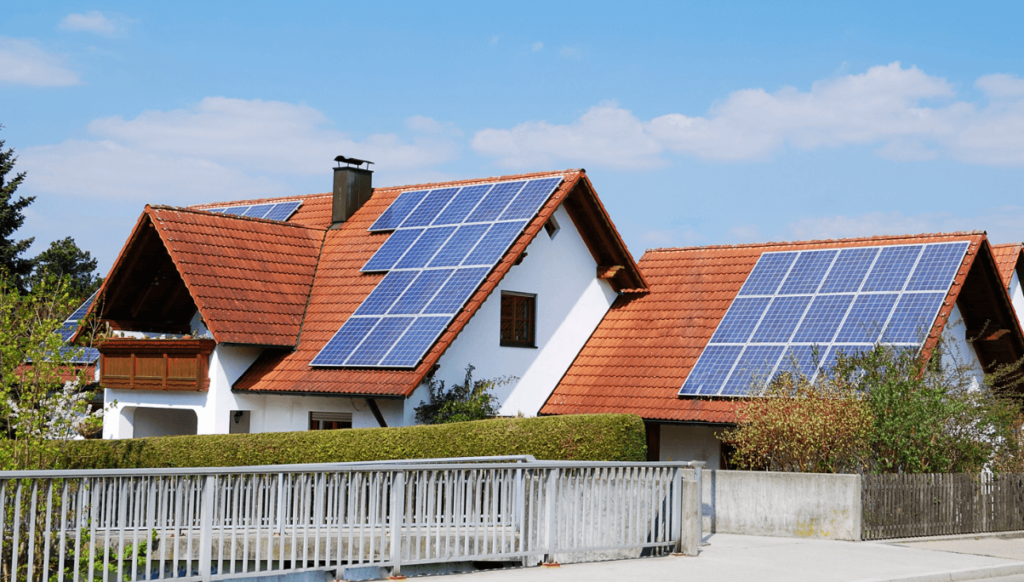
When helping your clients decide between solar and traditional roofing, providing a comprehensive comparison is essential. Each option has unique benefits and considerations, and the right choice depends on individual circumstances, goals, and preferences. Here’s a detailed comparison to guide your clients in making an informed decision:
1. Cost and Investment
Solar Roofing:
- Initial Cost: Solar roofing typically involves higher upfront costs due to the price of solar panels and installation.
- Long-Term Savings: Despite the initial expense, solar panels can lead to significant long-term savings on electricity bills. Over time, these savings can offset the installation costs.
- Incentives: Solar installations are eligible for various incentives, including federal tax credits, state rebates, and utility company incentives, which can reduce the overall cost.
Traditional Roofing:
- Initial Cost: Options such as asphalt shingles, metal, or tile generally have lower upfront costs than solar roofing.
- Maintenance and Replacement: They may require periodic maintenance and have a shorter lifespan than solar panels, leading to potential future costs for repairs and replacements.
2. Energy Efficiency and Sustainability
Solar Roofing:
- Energy Production: Solar panels generate renewable energy, reducing reliance on fossil fuels and lowering electricity bills.
- Environmental Impact: Solar energy is a clean, renewable resource that significantly reduces carbon footprints and contributes to environmental sustainability.
Traditional Roofing:
- Energy Efficiency: While some materials offer energy-efficient options (e.g., cool roofs that reflect sunlight), they do not generate electricity.
- Environmental Impact: The materials are often less environmentally friendly and may require more resources for manufacturing and disposal.
3. Durability and Lifespan
Solar Roofing:
- Longevity: Solar panels are durable and can last 25-30 years or more with minimal maintenance.
- Weather Resistance: Solar panels are designed to withstand various weather conditions, including hail, wind, and snow.
Traditional Roofing:
- Varied Lifespan: The lifespan of the materials varies. Asphalt shingles last 15-30 years, metal roofs last 40-70 years, and tile roofs last over 50 years.
- Weather Resistance: Durability depends on the material. Like metal and tile, offer excellent weather resistance, while others, like asphalt shingles, may be more susceptible to damage.
4. Aesthetic Considerations
Solar Roofing:
- Visual Appeal: Solar panels have a modern look that some homeowners find appealing. Integrated solar shingles can offer a more seamless appearance than traditional solar panels.
- Design Integration: Solar panels can be integrated into the roof design, but their appearance may not suit every homeowner’s aesthetic preference.
Traditional Roofing:
- Variety of Styles: Traditional roofing materials come in various styles, colors, and textures, offering more flexibility in matching the home’s architectural style.
- Classic Look: Traditional roofs can provide a classic as well as timeless appearance that appeals to many homeowners.
5. Installation and Maintenance
Solar Roofing:
- Installation Complexity: Installing solar panels requires specialized knowledge and expertise, making the process more complex and time-consuming.
- Low Maintenance: Solar panels require minimal maintenance, typically occasional cleaning as well as inspections.
Traditional Roofing:
- Simpler Installation: Traditional roofing installation is generally more straightforward and can be completed faster than solar panel installation.
- Routine Maintenance: Traditional roofs may require regular maintenance, such as cleaning gutters, inspecting for damage, as well as replacing worn materials.
6. Property Value and Marketability
Solar Roofing:
- Increased Property Value: Homes with solar panels often sell for a premium and may be more attractive to eco-conscious buyers.
- Marketability: Solar roofing can be a strong selling point, especially in areas where energy costs are high as well as sustainability is valued.
Traditional Roofing:
- Stable Property Value: Traditional roofs also contribute to property value, particularly if the roofing material is high-quality and well-maintained.
- Wider Appeal: Traditional roofing materials may have broader appeal, as not all buyers prioritize or value solar energy systems.
In conclusion, when advising your clients on choosing solar or traditional roofing, consider their needs, budget, aesthetic preferences, and long-term goals. Solar roofing offers substantial energy savings, environmental benefits, and potential property value increases, but requires a higher initial investment. Traditional roofing provides various styles, lower upfront costs, and established durability. By weighing these factors, you can help your clients make a decision that best fits their unique circumstances and priorities.